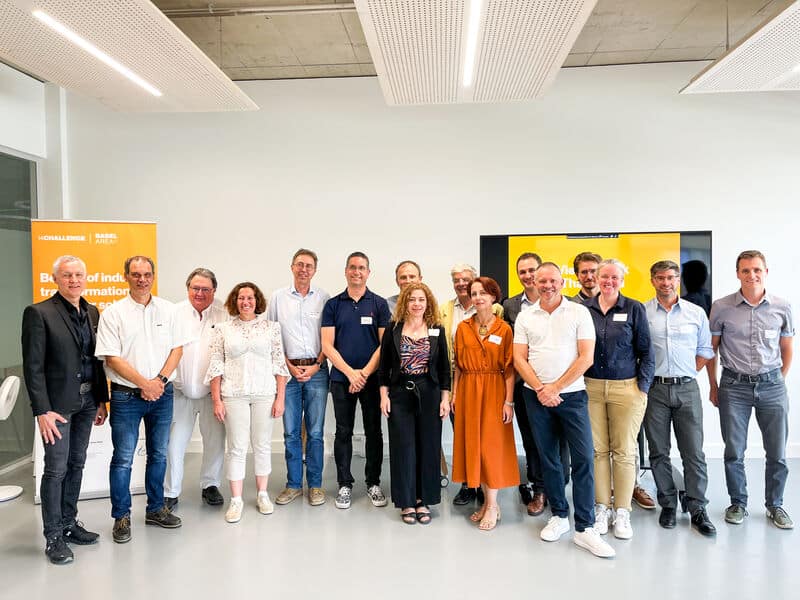
A culture of innovation isn’t reserved for trendy startups and hip entrepreneurs. Our most recent event, Technology Cirlce 16, proved that. Schweizer Salinen, Switzerland’s long-established salt manufacturer, managed to create an innovation culture that led to valuable advancements inside the organization.
Read on to learn more about their story and how you can build an innovation culture in your own organization in five steps.
What is innovation culture?
Innovation culture is a simple concept to define. A dictionary search does the job. Innovation means to make changes in something established. Culture is the ideas, customs and social behavior of a particular people. In a business context, innovation culture is the ideas, customs and social behavior that empower your employees to make changes in something established. But as so often with simple concepts, their implementation is anything but. Especially when the concept is so all-encompassing.
A Schweizer Salinen story
Before we outline the five steps to creating an innovation culture in your company, we want to introduce you to Schweizer Salinen. Schweizer Salinen is a Swiss company responsible for producing and supplying salt to everyone in Switzerland — for over 110 years!
As part of our Technology Circle 16, Schweizer Salinen hosted us to tour their salt production facility and explore how they integrate innovative approaches into their long-established production process.

Part of this digitization process means fostering a culture of innovation, which a story told by Schweizer Salinen beautifully illustrated:
One chemist makes a huge impact
Brine from the ground contains impurities like calcium sulfate and magnesium hydroxide. Adding lime induces a chemical reaction that separates those impurities from the brine. A chemist at Schweizer Salinen, deeply familiar with this process, independently and without any formal directive, ran experiments on company equipment to improve this process.
The results were significant:
- 20% reduction in lime usage
- 6.6% reduction in greenhouse gas emissions
Nobody had thought of improving this step of the established purification process until this one chemist took it upon himself to innovate.
How to build a culture of innovation in 5 steps
This narrative from Schweizer Salinen shows that a culture of innovation can emerge even in companies over 100 years old. Now it’s your turn! Whether you operate a startup or an industry giant, fostering an innovation culture in your organization is crucial to creating more value as a company.
Step 1: Hire innovative people
The digital journey of Schweizer Salinen’s improvement in salt purification started with just one person who challenged what was long established and taken for granted.
How do you know if someone is innovative?
Look for people who demonstrate adaptability, a natural curiosity, a willingness to challenge the status quo and to take risks as well as a track record of creative problem-solving. These are the people who see opportunities for improvement where others see routine.
Sometimes the most innovative ideas come from people with unconventional career paths or experiences. Be open to hiring individuals from diverse fields. They’re often called “change agents.” You can find them on all levels within your company.
By identifying and supporting these change agents, you make innovation not just a top-down initiative but an integral part of your company. Encourage them to take the lead on projects, mentor others and share their successes and failures openly. A little extra tip: You likely already have change agents in your company — it’s time to find them!
Step 2: Allow errors
Establish a culture where employees feel safe to propose new ideas without fear of criticism. Encourage open communication and the sharing of thoughts and concepts.
An innovation culture is an error culture. Your employees have to be encouraged to try out ideas, even if there’s a good chance they ultimately fail. Every mistake is an opportunity to learn and improve.
Embrace and share failures just as much as wins. Openly discussing what didn’t work and why lets your entire organization benefit from the lessons learned. This eliminates the stigma around failure and makes employees feel safe taking risks and pushing boundaries.
Create an environment where failure is a natural part of the innovation process. Encourage teams to document and share their setbacks and recognize those who take bold steps, even if they don’t succeed. Doing so sends a clear message that innovation is about progress, not perfection.
Step 3: Implement processes
Innovation culture isn’t just a mindset. It also needs processes that make launching an internal project easy.
At Schweizer Salinen, Dr. Urs Ch. Hofmeier, the CEO, developed an internal tool for employees to submit their ideas. Once approved, these employees were given 21 days per year to work on their projects. The only condition was that the project had to benefit the company (but not necessarily just in a monetary sense). How you set up your innovation promoting processes is up to you.
You can try an electronic tool, like Schweizer Salinen, an application template your employees can email or even dedicated meeting hours for innovative ideas. By implementing these structures, you will set your employees on a clear path to starting their projects.
Step 4: Foster collaboration and open communication
True innovation rarely happens in silos. Collaboration accelerates innovation like gasoline on a fire. By bringing together different people and teams with complementary skill sets and viewpoints, change agents can tackle challenges with a more holistic approach.
Schweizer Salinen takes it one step further. When an employee’s innovation project is approved, external design thinking and scrum coaches are brought in to provide structure and guidance. This is important because implementing a new solution, especially on a large scale, is a challenge on its own that most employees don’t know how to master alone.
Step 5: Measure correctly
Every innovative idea should support the company’s business — that’s a given. But you can’t always measure its usefulness in profit, revenue or even with data.
Sometimes, innovative projects lead to intangible benefits, such as improved processes, increased employee engagement or enhanced brand reputation. This won’t immediately show up on a balance sheet, but will significantly impact your company’s long-term success.
“We don’t have a specific R&D budget for employee projects. We look at each proposal like a startup where we prioritize exploration and experimentation, not a focus on hours spent or the cost involved. If the project continues to be promising, we’ll allocate more resources.”
Stephan HossHead Operation & Supply Chain Management of Schweizer Salinen AG
Stay innovative!
To maintain an innovation culture, it’s essential to keep exploring both within and beyond your company. Internally, encourage continuous learning, experimentation and collaboration across all levels and departments. Externally, stay connected with industry trends, partner with experts and seek inspiration from outside your usual circles.
Join the next Technology Circle
The Technology Circle seminar offers a platform to exchange ideas and explore the latest advancements in IoT, cybersecurity, AI and more. Engage with experts, share your insights and gain valuable knowledge from real-world use cases.
“We’re not big enough to have our own tech scout, so we use the Technology Circle events to find potential collaboration partners.”
Dr. Urs Ch. HofmeierCEO of Schweizer Salinen AG
Sign up to expand your expertise and dive into a community focused on driving technological progress.
You may also be interested in
Building the future of healthtech, digital health and techbio in the Basel Area
The power of a persuasive pitch deck
Roche investing an additional 1.2 billion Swiss francs in Basel
Nouscom secures 67.5 million euros in financing
Celebrating six months of innovation: i4Challenge accelerator New Ideas 2022/2023
How open innovation in healthtech hubs is fueling the rise of digital healthcare
”Are you interested in innovation and networking? In our Trinational Industry 4.0 Technology Circles we bring together researchers, developers, entrepreneurs and other stakeholders for cross-disciplinary exchange.
Sébastien MeunierDirector Industrial Transformation





